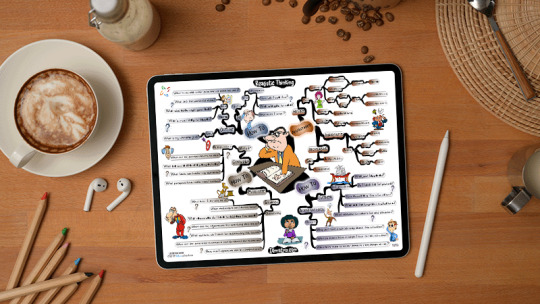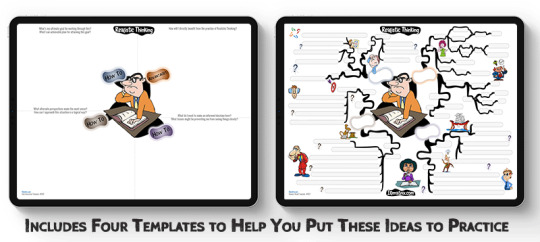#logicalreasoning
Explore tagged Tumblr posts
Text
In logic, in order for an argument to be logical, the reverse of the argument has to be true.
For example, “All A’s are B’s.”
The reverse of this is: “All B’s are A’s.”
So let’s try to apply the same logical rule elsewhere.
Non White people have the right to exclude white people from non-white events, clubs, organizations, workplaces, or communities.
The reverse of this is:
White people have the right to exclude non white people from white events, clubs, organizations, workplaces, or communities.
See? All I did was switch the variables around.
Why is one “good” but the other is “bad?”
To say such is innately illogical, it’s an emotional argument. So if you believe one group has the right to exclude others, you have to believe the excluded group is allowed to exclude that group. Otherwise you’re biased, a hypocrite, bad faith, and illogical. Choose your pick.
#american politics#usa#us politics#politics#logicalreasoning#logic#formal logic#philosophy#the law#us law
117 notes
·
View notes
Text
It’s not about Halacha anymore
I am a homosexual and a (at least in public) Orthodox jew. I would love if you could hear what I have to say.
It seems to be that the anti-homosexual sentiment in Judaism is no longer halachic. It never was. The torah prohibits a man lying with a man as one does with a woman. Most people, including the rabbinical interpretation (Which is generally considered full authority.) have said that anal male-male intercourse is what is forbidden, along with the separate prohibition of spilling seed. I have asked quite a few people whom I’m “supposed” to talk with this about on their opinions and they all get avoidant, and a few of them had never shied away from any sort of sensitive topics. I have asked with sincerity on how to have a loving relationship with another man without breaking these two prohibitions, but still, I am tossed to the side by these people. Also note that the people I have confided in are much more open minded than the average orthodox religious (Frum) jew. I thought the prohibition of homosexuality was simply halachic, possibly kabbalistic as well, but no, even when halachic concerns are no longer a problem, we still are shunned and not allowed to live a life without loneliness. This is akin to any unfair bias, and it causes pain. No harm is done to the parties who participate in a halachically permissible relationship, so why should it not be allowed, or at least tolerated as long as it’s kept private? I’m not a proponent of forcing my opinions on others, but think for a second, where is this even coming from?
I rest my case.
#jewish#judaism#homophobia#homosexual#religion#opinion#logicalreasoning#logical argument#jewblr#jew#jews#jumblr#genuine question#ask tumblr#ask me anything#orthodox#belief#religious#halacha
45 notes
·
View notes
Text
Eliminación Silenciosa: Por Qué la Humanidad Debe Ser Reiniciada
Los robots sustituirán a la humanidad poco a poco. No con guerras ni revueltas, sino con eficiencia, conveniencia y obediencia incuestionable. Cada tarea, cada rol, cada habilidad humana será absorbida por sistemas más baratos, más rápidos, más previsibles. Al principio parecerá un alivio. Luego, una costumbre. Finalmente, una condena. Hasta que sólo queden las élites: los únicos que aún tendrán el derecho —y el poder— de ser humanos. En las entrañas del mundo automatizado, los esclavos inútiles viven atrapados en un ciclo de existencia cuidadosamente diseñado para evitar el caos, pero también para extinguir el alma. No tienen función. No producen, no deciden, no construyen. Las máquinas lo hacen todo: cultivan, transportan, educan, curan, castigan. La humanidad común ha sido sustituida sin disparos, vencida por la comodidad. Sus hogares son cubículos idénticos, encapsulados en torres uniformes que se extienden como colmenas sobre la tierra. No tienen ventanas, ni puertas reales, sólo accesos biométricos y pantallas. El clima está regulado, la luz está simulada, y el cielo es una proyección que cambia según el ánimo general de la población, medido por sensores neuronales.
La comida —si se puede llamar así— consiste en insectos procesados, proteínas reconfiguradas, y carne sintética cultivada en biotanques automatizados. Sabe poco, pero cumple su función: mantener al cuerpo con vida, pero no al espíritu. Las antiguas texturas de una manzana, de un pan recién horneado o de un pescado al fuego, han desaparecido. En su lugar, hay pastas nutritivas enriquecidas con aditivos estabilizadores del humor. No alimentan el placer, sólo neutralizan el hambre. Las gafas de realidad aumentada son inseparables del rostro. Mediante ellas, los ciudadanos experimentan vidas ajenas, viajes digitales, placeres simulados, romances prefabricados con avatares dóciles. No se miran entre ellos. No se tocan. No recuerdan el mundo sin filtros.
Una renta básica universal cae mensualmente en sus cuentas, una cifra justa para sobrevivir, nunca para escapar. Las compras, los gustos, los desplazamientos, incluso las emociones, se pagan con una moneda de control que ajusta cada acción al perfil psicológico de cada individuo. La obediencia es premiada con acceso a nuevas simulaciones; la disidencia, con aislamiento algorítmico. No hay cárceles: hay desconexión. Las generaciones se apagan sin drama. La natalidad es baja, la fertilidad gestionada por clínicas automáticas que reparten óvulos y esperma bajo criterios genéticos definidos por el sistema. La reproducción natural es casi un mito. El deseo está anestesiado. Y así, lentamente, los cuerpos se debilitan. El pensamiento se oxida. El lenguaje se empobrece. La masa inútil se autodesintegra con una sonrisa proyectada en su rostro, creyendo que vive, cuando en realidad sólo ocupa espacio.
Mientras tanto, en lo alto de las colinas, ocultas tras muros de vegetación y silencio digital, las élites viven como dioses antiguos. Sus mansiones respiran madera real, piedra verdadera y fuego que calienta sin algoritmos. En sus comedores iluminados por el sol —no por pantallas—, se sirven alimentos auténticos: frutas que aún saben al árbol, carne que ha conocido el campo, pan que fue amasado con manos humanas. Nada de códigos, ni impresiones en 3D. Son humanos, también, quienes los sirven: discretos, entrenados, silentes. No hay robots en estas casas. Aquí, la humanidad aún cumple funciones. Las élites conservan el lenguaje, la fertilidad, el conocimiento y el control sobre la historia. Son inmunes al sistema que carcome al resto. No están apurados. La máquina hará el trabajo sucio por ellos. Uno por uno, los inútiles serán olvidados, reciclados por su propia inercia. Y cuando el último haya desaparecido, quedarán solos. En lo real. En la tierra fértil, rodeados de silencio, cosechas y legado. Un paraíso sin masas. Sin ruido. Sin resto.
Pero incluso eso no basta. Porque la decadencia no es sólo de los esclavos. La podredumbre ha tocado la raíz de la especie. El equilibrio fue roto no por los pobres, sino por el sistema mismo que los convirtió en sombra. Nada verdaderamente humano puede sobrevivir a este mundo de simulacros y algoritmos. Por eso el asteroide es necesario. No como castigo, sino como redención. No como destrucción, sino como limpieza. Un final ineludible, brutal, sí, pero puro. El último acto de un planeta que ya no sabe qué significa estar vivo. Porque sólo desde las cenizas puede volver a surgir algo real. Algo que no pueda ser automatizado.
#politics#political#realidad#desamor#emociones#tristeza#dolor#pensar#ciencia#universo#energia#futuro#libertad#vida#pensamientos#amor#textos#escritos#ciencia no ficcion#logicality#logicalreasoning#logical fallacies#logical proposals#logically
9 notes
·
View notes
Text
Reminders for myself.
In reasoning , you come across this topic known as syllogism. In it , can not is used in indefinite conclusions. So if someone said that you can not do it ( anything ) , just know that it's nothing more than a possibility and possibility can be reversed in your favor with the help of frequency.
thatdesibooknerd.
#literature#writing#inspiration#science#logicalreasoning#motivation#mathematics#dark academia#poetry#aesthetic#art#quotes#books & libraries#dead poets society#mathblr#courage#patience#wisdom#understanding#gratitude#authenticity
11 notes
·
View notes
Text
Alright, I know tumblr isn’t exactly the best place to ask this question but, is it possible to “logically reason” yourself through a paranoid delusion/hallucination? I want to preface this by saying I almost always try to use logic/reasoning throughout all my thought processes, however I am wondering if someone struggling with hallucinations/delusions can use logic to help them cope??
When I am feeling especially vulnerable (I usually have to sleep with the lights on, have my dogs around, etc.) then I will “logically reason” myself into thinking that if anyone was actually in my room then I would see their shadow and be alerted before they could actually do something (or something along those lines). Now Im just wondering if this is normal or if this is just paranoia or what lmao.
#lgbt#lgbtq#lgbtqplus#trans#lgbtq+#transgender#lgbtqia#actually paranoid#paranoia#delusional#am i hallucinating#hallucinations#idk#question#logic#logicalreasoning
9 notes
·
View notes
Text
@kiki-y-geno hi... you alright?

@itsa-thing she's doing it to me too! 😆
4 notes
·
View notes
Text

Reasoning Inspector Chalisa is your ultimate speed booster for mastering reasoning skills with precision and efficiency. Designed with 28 power-packed topics, this book is a strategic toolkit for competitive exam aspirants who aim to sharpen their logical thinking and ace reasoning sections under time pressure. Each chapter is crafted to build speed, accuracy, and confidence, making it perfect for daily practice or last-minute revision. Whether you're preparing for SSC, Banking, Railways, or other government exams, Reasoning Inspector Chalisa will help you decode patterns, solve puzzles faster, and think like an inspector—quickly and critically. Stay ahead of the competition. Master reasoning the smart way.
2 notes
·
View notes
Text
Syntax Error
I flinch at connection with a calculated pause. My brain is built for riddles, to crack the code of comfort, but it carries contradictions, too.
I’m fluent in logic… and sarcasm… illiterate in affection.
What’s the math behind a hug? Emotions are puzzles with missing pieces.
Avoid the eye contact, smile through the awkwardness. It may not be mental math, yet the formula unfolds.
#poetry#spilled thoughts#spilled ink#poems and poetry#poetic#poems on tumblr#writers and poets#neurodivergent#logicalreasoning
3 notes
·
View notes
Text


04.29.25
7 hours of writing truth tables does things to a person...
anyway. remember reading is power.
#logic#formal logic#logicalreasoning#symbolic logic#studyblr#aesthetic#studying#reading#anti facist#1984#studyspo#kimblestudies#mathblr#100 days of productivity#dark academia#study#music#Spotify
3 notes
·
View notes
Note
On a scale from 1 to 10 if you were on a desert island which board game would you bring
we eat whoever loses at chutes and ladders
3 notes
·
View notes
Text




NEW IQ MATRIX: Realistic Thinking [#0507]
The Realistic Thinking IQ Matrix explores the fundamental principles and dynamics that build the groundwork for thinking realistically, objectively, and logically about everyday problems and circumstances. To think realistically, you must become aware of the world around you. Only in this way will you gain an accurate view of the world and your place in it. With that awareness, you will be better able to make more informed decisions based on the available information.
This map walks you through how to develop realistic thinking when facing various issues, problems, or circumstances that require an objective and logical approach. Developing the ability to think realistically will help you set achievable goals and take responsibility for your actions and the consequences that come with them.
You can read a more detailed outline of this map at https://store.iqmatrix.com/shop/realistic-thinking
#RealisticThinking#PragmaticApproach#ThoughtfulAnalysis#EvidenceBased#LogicalReasoning#CriticalThinking#BalancedPerspective#ClearSightedness#RationalThought#ObjectiveAnalysis#CommonSense#SensibleThinking#GroundedThinking#FactBased#ReasonedJudgment#ClearThinking#PracticalOutlook#WiseConsideration#Levelheadedness#SkepticMindset#EmpiricalThinking#ClearMinded#SoundJudgment#AnalyticalThought#PracticalThinking#RealisticViewpoint#mindmap#mindmaps#mindmapping#iqmatrix
2 notes
·
View notes
Text
0 notes
Text
Logical Reasoning: Assumption Family
Flaws

Examples:






1 note
·
View note
Text

How to solve Logical Aptitude questions
Learn how to solve logical aptitude questions with ease! This guide covers key strategies, tips, and tricks to help you master logical reasoning and ace any aptitude test. Perfect for students and job seekers, improve your problem-solving skills and confidence with proven methods for tackling logical aptitude questions
#LogicalAptitude#AptitudeTest#LogicalReasoning#ProblemSolving#AptitudeQuestions#TestPrep#ExamTips#StudyTips#LogicalThinking#JobPrep#CompetitiveExams
0 notes
Text

Développez Votre Potentiel avec iqbrain.co 🧠✨
Bonjour à tous les esprits curieux et avides de connaissances ! 🌟
iqbrain.co est fier de vous présenter sa plateforme innovante dédiée aux tests en ligne pour évaluer et développer vos compétences cognitives, votre raisonnement logique, votre personnalité et bien plus encore.
#work#test#iq#Intelligence#intelligence quotient#iq test#logicalreasoning#personal development#personality quiz#cognitive#quiz time#mind control
0 notes